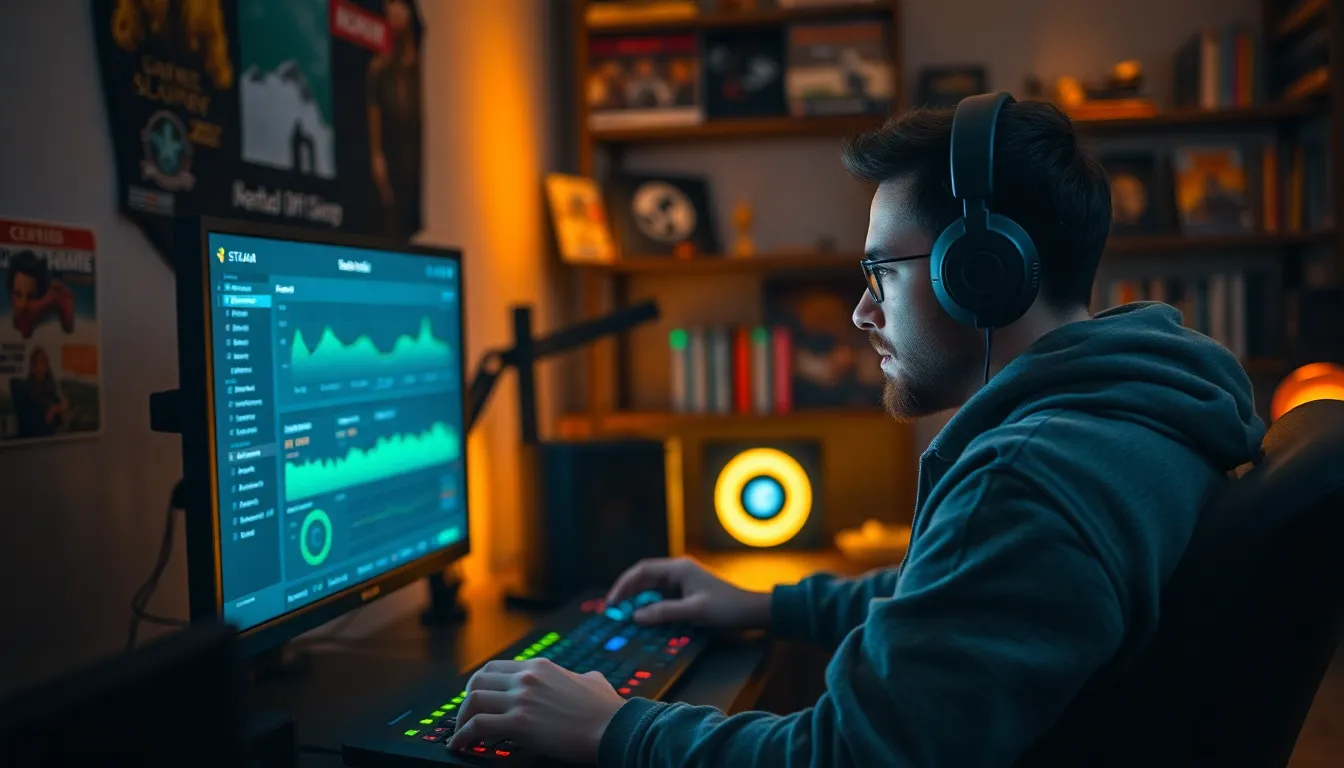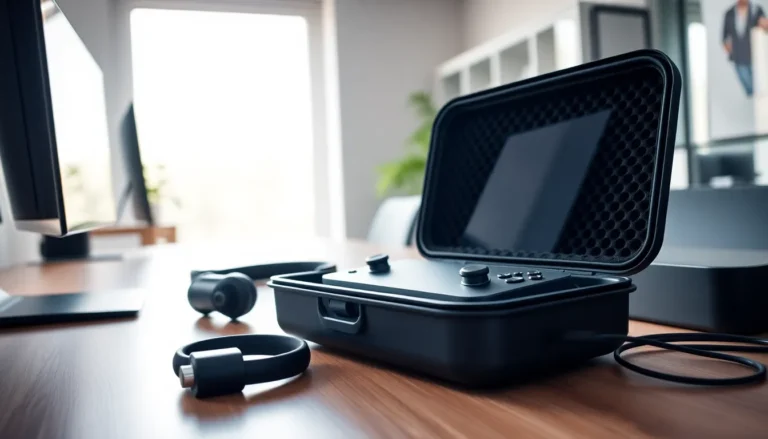Gamers know the frustration of a stutter ruining an epic gaming session. Picture this: you’re deep in a boss battle, adrenaline pumping, and suddenly your Steam Deck decides it’s time for a little dance party instead of smooth gameplay. Talk about a buzzkill!
Table of Contents
ToggleUnderstanding Steam Deck Stutter
Stuttering affects many gamers and leads to frustrating interruptions during gameplay. Identifying its causes helps resolve performance issues effectively.
Common Causes of Stuttering
Stuttering often results from hardware constraints. Limited processing power can struggle with demanding games. Inadequate RAM may cause frequent buffering. Overheating can lead to throttling, reducing performance. Additionally, outdated drivers frequently contribute to stuttering experiences. Background applications consuming system resources can also detract from gaming performance. Network issues play a part when online gaming, where lag and packet loss can ruin the experience.
Effects on Gaming Experience
Stuttering negatively impacts immersion in gameplay. Gamers experience frustration as smooth transitions become choppy. Timing issues result in missed inputs during critical moments. This disruption can affect player reactions, especially in fast-paced scenarios like boss battles. Reduced frame rates can create a less enjoyable visual experience. Persistent stuttering can lead gamers to abandon titles entirely, decreasing overall satisfaction with the Steam Deck.
Identifying Stutter Issues

Recognizing stutter issues is vital for enhancing the gaming experience on the Steam Deck. Gamers often face performance problems that disrupt immersion during gameplay.
Diagnosing Performance Problems
Determining the root cause of stuttering starts with observing in-game behavior. Frame rates may drop during critical moments, indicating potential performance bottlenecks. Examining specifications, such as RAM and GPU capacity, reveals if hardware meets game demands. Checking for overheating is essential; high temperatures can lead to thermal throttling. Unresponsive inputs during intense gameplay suggest that background applications might be consuming resources. Finally, network stability should be assessed for online gaming stutters.
Tools for Monitoring Performance
Various tools assist in monitoring performance to fix stutter issues. Fraps serves as a popular choice for tracking frame rates easily. MSI Afterburner provides real-time stats on GPU and CPU usage, which helps identify resource strain. Steam’s built-in performance overlay offers insights into frame rate and latency, aiding players in real time. Running stress tests helps gauge system limits, ensuring the Steam Deck performs optimally. Lastly, leveraging logging tools captures performance metrics, enabling gamers to review historical data for better troubleshooting.
Steam Deck Stutter Fix Techniques
Finding effective stutter fixes for the Steam Deck involves a combination of software solutions, hardware adjustments, and game settings optimization. Each method enhances performance and minimizes disruptions for a smoother gaming experience.
Software Solutions
Updating drivers is a fundamental step. Recent driver versions often include bug fixes and optimizations for performance. Checking for updates can significantly reduce stuttering. Additionally, closing background applications frees up system resources, allowing the Steam Deck to allocate more power to the game. Users can also utilize performance-boosting applications that prioritize gaming processes over others, ensuring that resources are effectively managed.
Hardware Adjustments
Cooling solutions play a crucial role in maintaining optimal performance. Gamers can use cooling pads to prevent overheating. Maintaining adequate airflow helps prevent thermal throttling, which can cause stuttering. Ensuring adequate RAM is also essential; upgrading to a higher capacity may improve multitasking and gaming performance. Connecting the Steam Deck to a power source while gaming enhances performance further, ensuring consistent power delivery.
Game Settings Optimization
Adjusting in-game settings can yield significant improvements. Lowering texture quality and turning off unnecessary graphical effects can lessen the load on hardware. Enabling performance modes in specific games prioritizes frame rate over graphical fidelity, ensuring smoother gameplay. Frame rate caps should align with the monitor’s refresh rate for better synchronization. Lastly, reducing the resolution slightly may provide a notable boost in performance without sacrificing much visual quality.
Community Solutions and Feedback
Community members actively share solutions to address stuttering on the Steam Deck, creating a wealth of practical advice.
User-Reported Fixes
Users often mention updating the Steam Deck’s operating system as a crucial step in resolving stuttering. Many individuals notice improvements after disabling certain background applications consuming system resources. Another common recommendation involves lowering in-game graphics settings, which allows for smoother gameplay experiences. Adjusting the performance profile in Steam settings can also help mitigate stutter issues. Finally, ensuring that the device remains cool through proper ventilation and cooling methods is frequently cited as an effective fix.
Popular Mods and Tweaks
Popular mods enhance the Steam Deck’s performance while addressing stuttering concerns. One frequently discussed mod is the “GameMode,” which optimizes system performance during gaming sessions. Users tend to praise the “Proton GE” for better compatibility with various games, resulting in fewer performance hiccups. Another useful mod is the “Steam Deck Performance Overlay,” which provides critical real-time metrics during gameplay, enabling players to make necessary adjustments. Community-sourced tweaks, such as customized fan curves, further improve cooling and stabilize performance while gaming.
Addressing stuttering on the Steam Deck can significantly enhance the gaming experience. By understanding the causes and implementing effective fixes, players can regain immersion and enjoy smoother gameplay. Regularly updating drivers and optimizing settings are essential steps in this process.
Utilizing community-sourced solutions and performance monitoring tools can further aid in identifying and resolving issues. With a proactive approach to troubleshooting, gamers can minimize disruptions and fully enjoy their time on the Steam Deck. Embracing these strategies not only improves performance but also fosters a more satisfying gaming journey.









